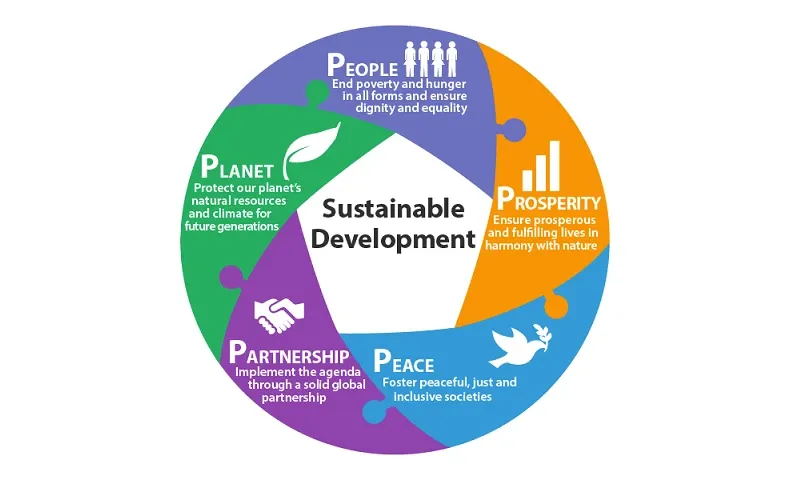Infrastructural development problems and need for sustainable development
Kerala is once again in the grip of an environmental crisis. Incidents of landslides due to unusually heavy rains have been recorded in Kottayam and Idukki. This has caused a huge loss of life and property.
One of the major reasons for the loss of life is the change in the land use pattern in Kerala, which needs a serious review. With a population density of 860 persons per square kilometer (as per 2011 Census) against the all India average of 368 persons per square kilometer, Kerala is facing the highest pressure on its land and hence not only in terms of Kerala but also in India as a whole. There is a need to seriously consider the issue of development versus environment.
Change in land use pattern in Kerala
Historically most of the settlement in Kerala was concentrated in the coastal plain, the adjoining Terai region, and parts of the midland.
However, this scenario has now changed with notable land-use changes in topographical boundaries.
Population growth, agricultural expansion, economic development, infrastructural development (particularly road construction), and inter-state migration – all these factors have driven settlement in the highlands.
The number of residential buildings in Kerala is also increasing rapidly. The population of Kerala grew by 5% during the decade 2001-11, according to census data, but the number of residential buildings registered a growth of about 20% during the same period.
Problems associated with unsustainable infrastructure
Impact on the Land Environment: Heavy construction has a serious impact on the land environment. Not only the space being used for the construction of settlements but also the landscape is constantly being changed through excavation and excavation, slope modification, rock excavation, and construction of roads for the supply of construction materials.
Changes in River Basin: Due to heavy construction, the basin of all the rivers is also changing. As a result, there has been a drastic change in the nature of the developed areas through weathering and soil formation under natural vegetation cover.
Simultaneously, the water-absorbing capacity of the river catchment area is depleting, increasing surface runoff and reducing groundwater recharge.
Road construction in hilly areas (even if it is done by cutting slopes) is also making the landscape unstable and creating favorable conditions for landslides.
Impact on Low-Slope Habitats: Constructions on hill slopes are prone to collapse during heavy rains.
development vs environment
Relationship of Environment with Development:
Rapid industrialization and urbanization are essential for achieving desired levels of economic development.
It is also considered necessary to bring about a significant increase in per capita income.
However, these income-generating activities are also bound to produce negative environmental consequences such as pollution.
Clearly, environmental quality is being compromised to meet the goals of massive job creation and poverty reduction.
There is a belief that the quality of the environment can be restored by the gradual increase in the level of income along with the increase in financial and technical capabilities.
But the reality is that continuous development creative activities only make the quality of the environment worse.
Growth-Related Factors Affecting Environmental Sustainability:
Lack of Environmental Compliance:
Neglect of environmental principles is a major reason why natural disasters cause large numbers of avoidable casualties.
No practice of scientifically assessing the risk of natural hazards in an area is fully implemented.
Uncontrolled excavation and unscientific harvesting of hill slopes increase the risk of soil erosion, resulting in an increased risk of landslides.
Consequences of Subsidies:
The government has been providing huge amounts of subsidies in an effort for the welfare of the weaker sections of society.
But the subsidized nature of services such as energy and electricity leads to their overuse and undermines environmental sustainability.
In addition, subsidies also undermine the revenue base and limit the government’s ability to invest in new, clean technologies.
Cost-free environmental resources:
Access to natural resources is completely free and no individual user bears the full cost of environmental degradation resulting in over-use or exploitation of resources.
The complexity of Population Dynamics:
The growing population further strengthens the problematic relationship between underdevelopment and environmental degradation.
In addition, poverty encourages migration, which makes urban areas environmentally unstable or unsustainable.
Both of these results put pressure on resources, and as a result, environmental quality deteriorates, productivity declines, and poverty deepens.
way ahead
Ecologically sensitive development: Development-related interventions should be prudent and ecologically sensitive to avoid unintended consequences.
The concerned governments need to take measures like cost-benefit analysis.
Technical expertise: Re-engineering our Earth with the support of Earth scientists, independent public policy experts, elected representatives, and citizens of affected areas requires technical expertise.
Incorporating indigenous knowledge: Regions and countries can benefit from the knowledge of indigenous peoples and their understanding of the wider ecosystem.
Thus, governance, including traditional institutions and management systems, must involve indigenous peoples and local communities in their planning to protect nature and develop an understanding of climate change.
Conservation of Biodiversity: The relationship between biodiversity and environmental sustainability highlights the critical need to integrate biodiversity considerations into any decision-making.
Thus, the Environment Impact Assessment (EIA) must be done before any infrastructure project is accepted.
Conclusion
The United Nations Development Program (UNDP), which pursues a human development approach, has proposed a ‘Planetary-Pressures Adjusted Human Development Index, which measures the human development of a country according to its ecological footprint. Based on evaluation.
Living in the Anthropocene era, we need to make efforts to protect our natural world from any further damage.



